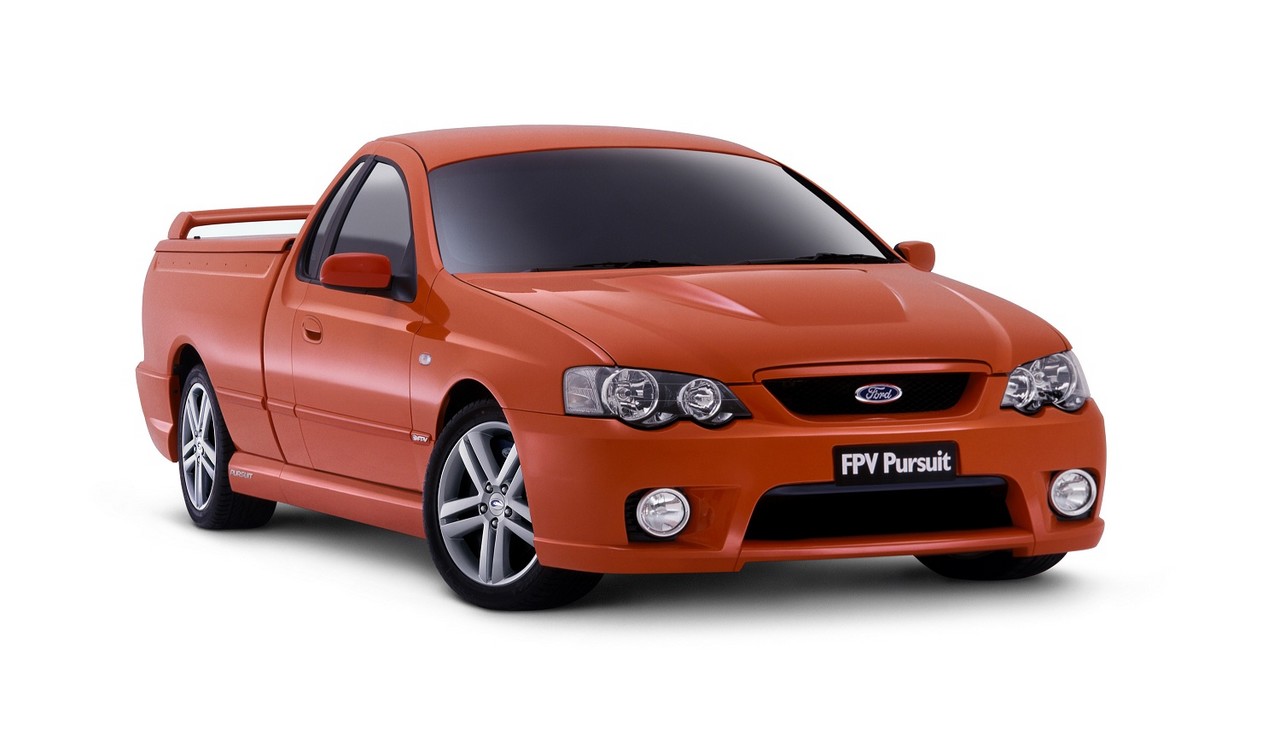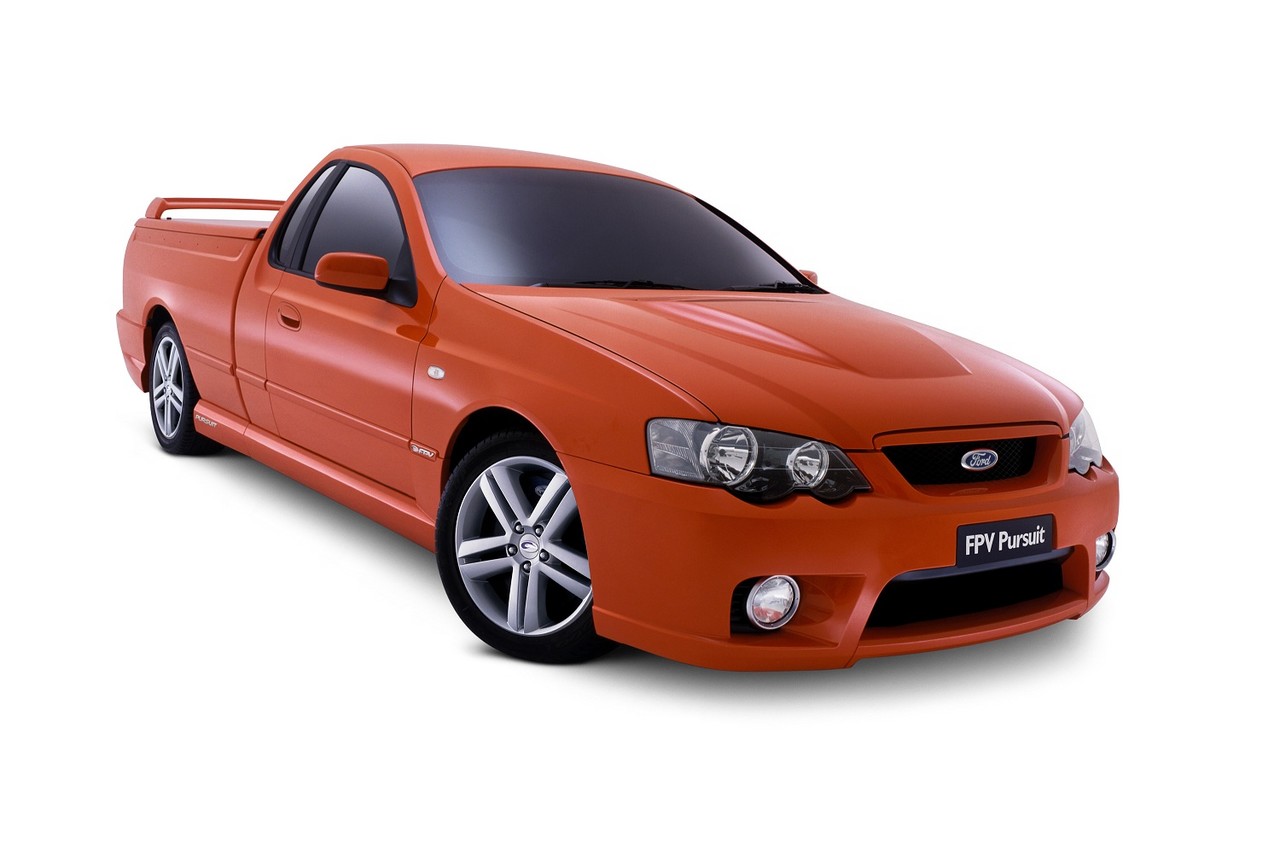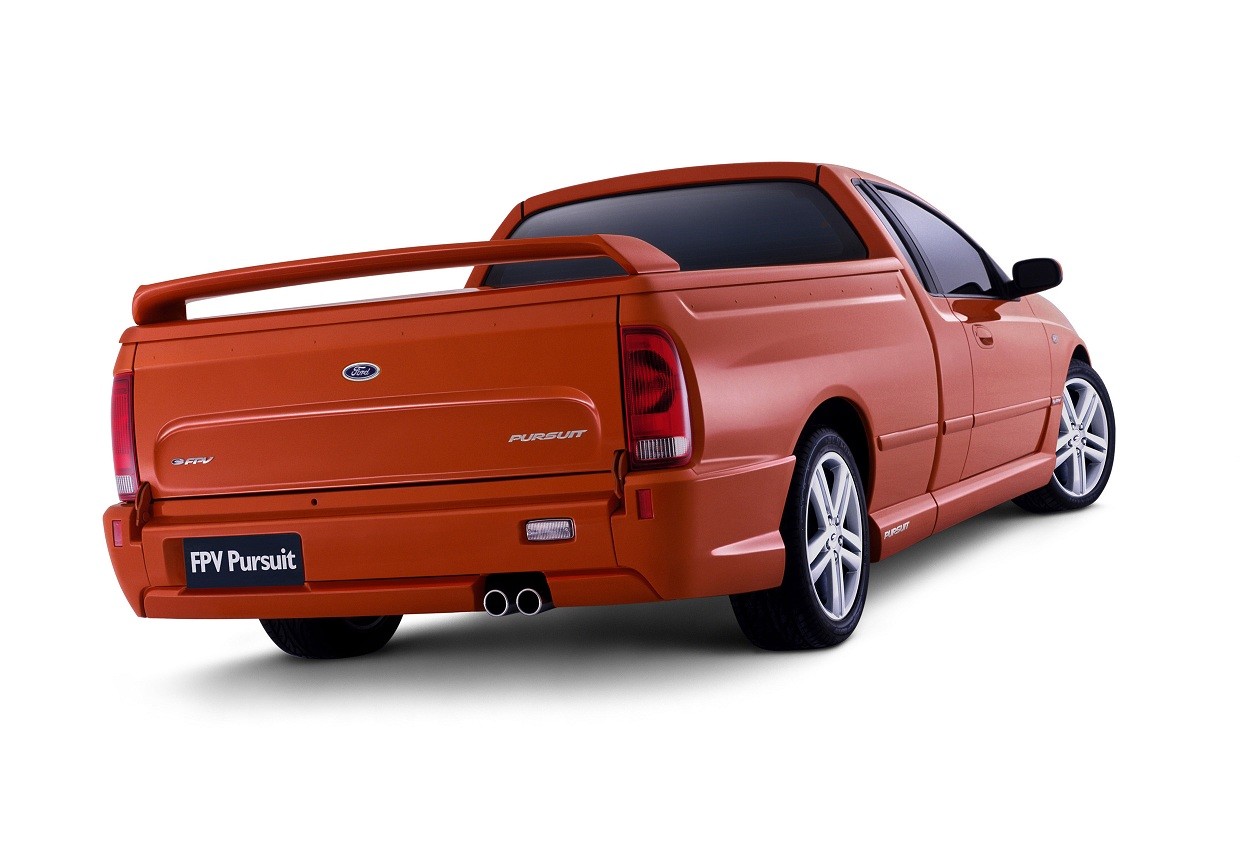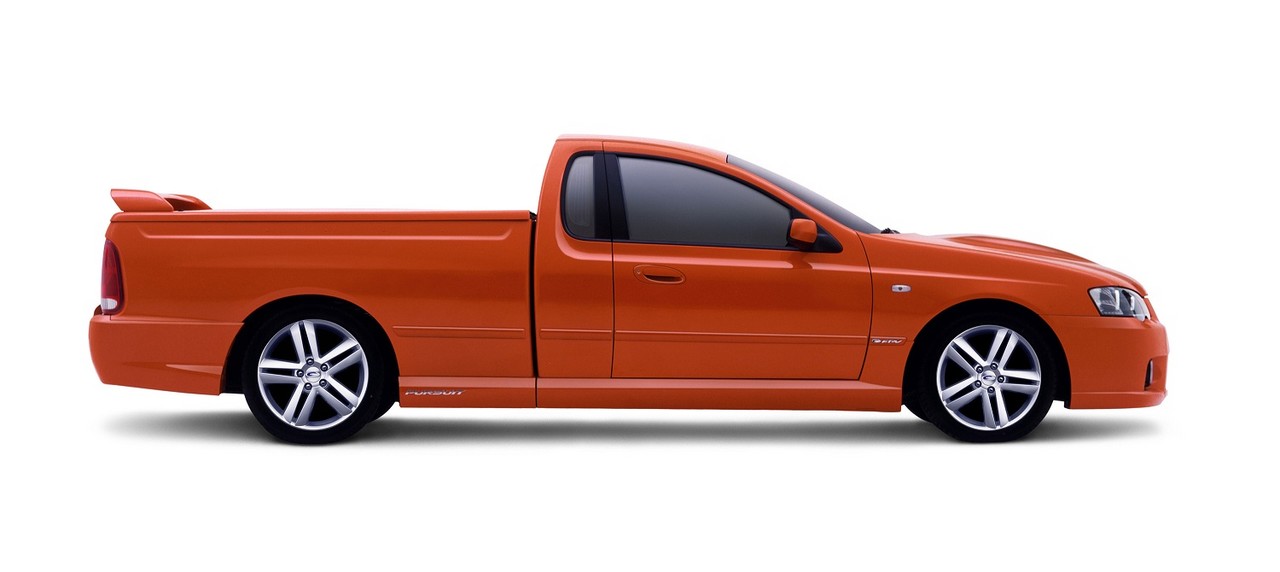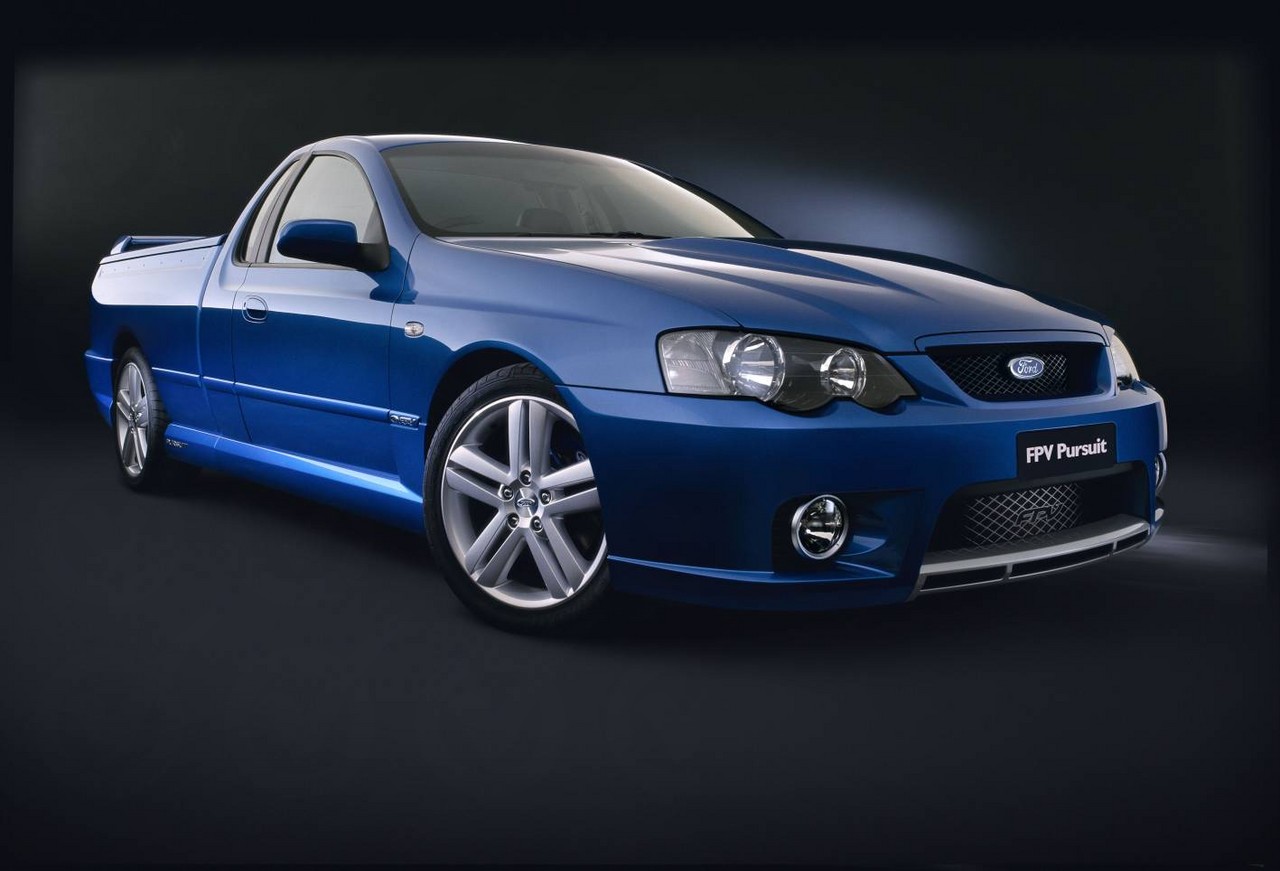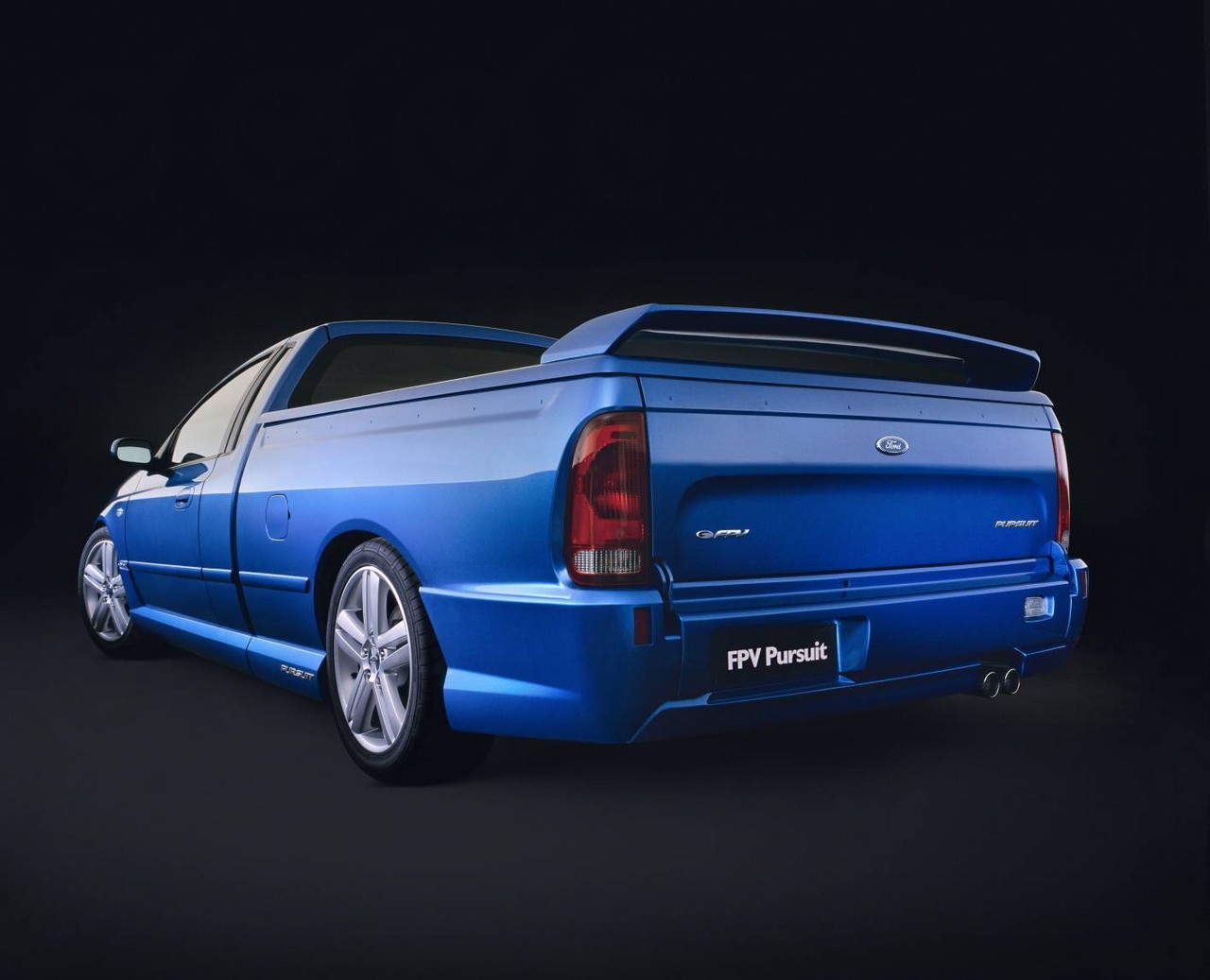
- Powerful 5.4-litre ‘Boss 290’ V8 engine
- Accurate steering
- Powerful Brembo brakes
- Generally impressive dynamics…
- … but leaf spring rear suspension struggles for traction on uneven surfaces
- For BTR transmission, coolant lines in heat exchanger were susceptible to failure
- Prone to drivetrain clunks
- Suspension, driveline and road noise
- Low standard of interior fit and finish
Review: FPV BA.I Pursuit (2003-04)
Overview
Released in February 2003, the FPV BA Mk.I (BA.I) Pursuit was a rear-wheel drive, performance utility. Manufactured in Campbellfield, Victoria, the Pursuit was powered by the 5.4-litre Boss 290 V8 petrol engine which was mated to either a four-speed automatic or five-speed manual transmission.
Boss 290 engine
Assembled by hand in Campbellfield, the 5.4-litre Boss 290 V8 engine had a cast iron block, cast aluminium cylinder head (shared with the Mustang Cobra R), forged steel crankshaft, cross-bolted main bearing caps, sintered connecting rods, double overhead camshafts (DOHC) per cylinder bank, roller finger followers, four valves per cylinder, an alloy inlet manifold, coil on plug ignition and a compression ratio of 10.5:1.
Compared to the Boss 260 V8 engine in the Ford BA Falcon XR8 , the Boss 290 engine had:
- High performance pistons with domed tops, larger internal pillars and a special ring pack. As a result of the higher compression ratio (10.5:1), the Boss 290 engine required 95 RON premium unleaded petrol;
- Re-engineered connecting rods to accommodate the larger gudgeon pin of each piston;
- Specially balanced crankshafts to match the new piston and conrod combination;
- High performance tri-metal main and big-end bearings for extra durability;
- Cobra R inlet and exhaust camshaft profiles (for 13 mm inlet and 12 mm exhaust valve lift);
- Longer valve stems and springs to match the high lift camshafts;
- A modified camshaft cradle for the longer finger followers;
- A high-compression ‘Terminator’ head gasket;
- High-tensile head bolts that were stretched under tension for greater strength; and,
- A unique Boss 290 engine management system
Transmissions
The FPV Pursuit was available with either the:
- Four-speed BTR M97-019 automatic transmission which had a special high torque gear set and low-stall speed torque converter. With this transmission, the driver could perform console-mounted sequential shifts with full manual override; or,
- Five-speed Tremec TR3650 manual transmission which, for the Boss 260 and 290 engines, had a unique input shaft, clutch housing, extension housing, shift rail and 31-spline output shaft.
Development and dimensions
The driveline of the BA Pursuit was based on the AU Falcon Ute XR8 Pursuit 250 , but incorporated elements from the BA GT sedan. Specifically,
- Like the BA GT, the Pursuit had a 105 BCD Flex coupling behind the transmission to absorb driveline shocks. However, the BA GT’s centre universal joint was replaced by a plunging CV joint from the XR8 Pursuit 250;
- Compared to the Pursuit 250, the double cardan joint at the differential end of the was replaced by a fixed CV joint and, for greater refinement, the front shaft was lengthened and the rear shaft shortened.
Furthermore, the Pursuit was fitted with a Dana M86 limited slip differential which featured a wet design heavy-duty multi-plate clutch.
The BA Pursuit was 5077 mm long, 1870 mm wide, 1515 mm tall and had a 3096 mm long wheelbase; kerb weight was approximately 1780 kg.
Suspension
The FPV BA Pursuit had double wishbone front suspension and a live rear axle suspended by leaf springs (both with gas-filled dampers and anti-roll bars). Like the Pursuit 250, the BA Pursuit had Delphi dampers front and rear.
| Engine | Trans. | Peak power | Peak torque | |
|---|---|---|---|---|
| BA Pursuit | 5.4-litre Boss 290 petrol V8 | 4sp auto, 5sp man. |
290 kW at 5500 rpm | 520 Nm at 4500 rpm |
Safety equipment
Standard safety equipment for the FPV BA Pursuit included dual front airbags, ABS, electronic brake force distribution, front seatbelts with pretensioners and a load limiting seatbelt for the driver.
Brakes
The FPV BA Pursuit had 325 mm by 32 mm grooved and vented Rossini front brake discs with two-piston C6 calipers and 303 mm by 16 mm grooved rear discs with single piston calipers.
Features
Standard features for the FPV BA Pursuit included 18-inch alloy wheels with 245/40 ZR18 Dunlop SP9000 tyres, a 100 watt sound system with four speakers and a CD player, air conditioning, cruise control, contoured sports seats with suede-feel bolsters, a four-way power adjustable driver’s seat, adjustable front seat lumbar support, remote central locking, power mirrors and windows, a tilt and reach adjustable steering wheel, a trip computer and an immobiliser.
Review: FPV BA.II Pursuit (2004-05)
Overview
Released in October 2004, the BA Mk.II (BA.II) Pursuit introduced a six-speed Tremec T56 manual transmission and revised suspension settings with increased spring rates. Inside, there were ‘Sports Instrument’ gauges on top of the upgraded interior command centre (ICC) with a large TFT colour screen and illuminated window switches.
Tremec T56 manual transmission
The close-ratio six-speed Tremec T56 manual transmission had double synchromesh on all forward gears and single synchromesh on reverse, linear bearings in the shift rail, direct linkage shifters and an electronic reverse gear lockout.
| Engine | Trans. | Peak power | Peak torque | |
|---|---|---|---|---|
| BA Pursuit | 5.4-litre Boss 290 petrol V8 | 4sp auto, 6sp man. |
290 kW at 5500 rpm | 520 Nm at 4500 rpm |
Features
Standard features for the FPV BA.II Pursuit were extended to include a 100 watt sound system with six speakers and a six-disc CD player, dual-zone climate control air conditioning and automatic headlights.
Related links
